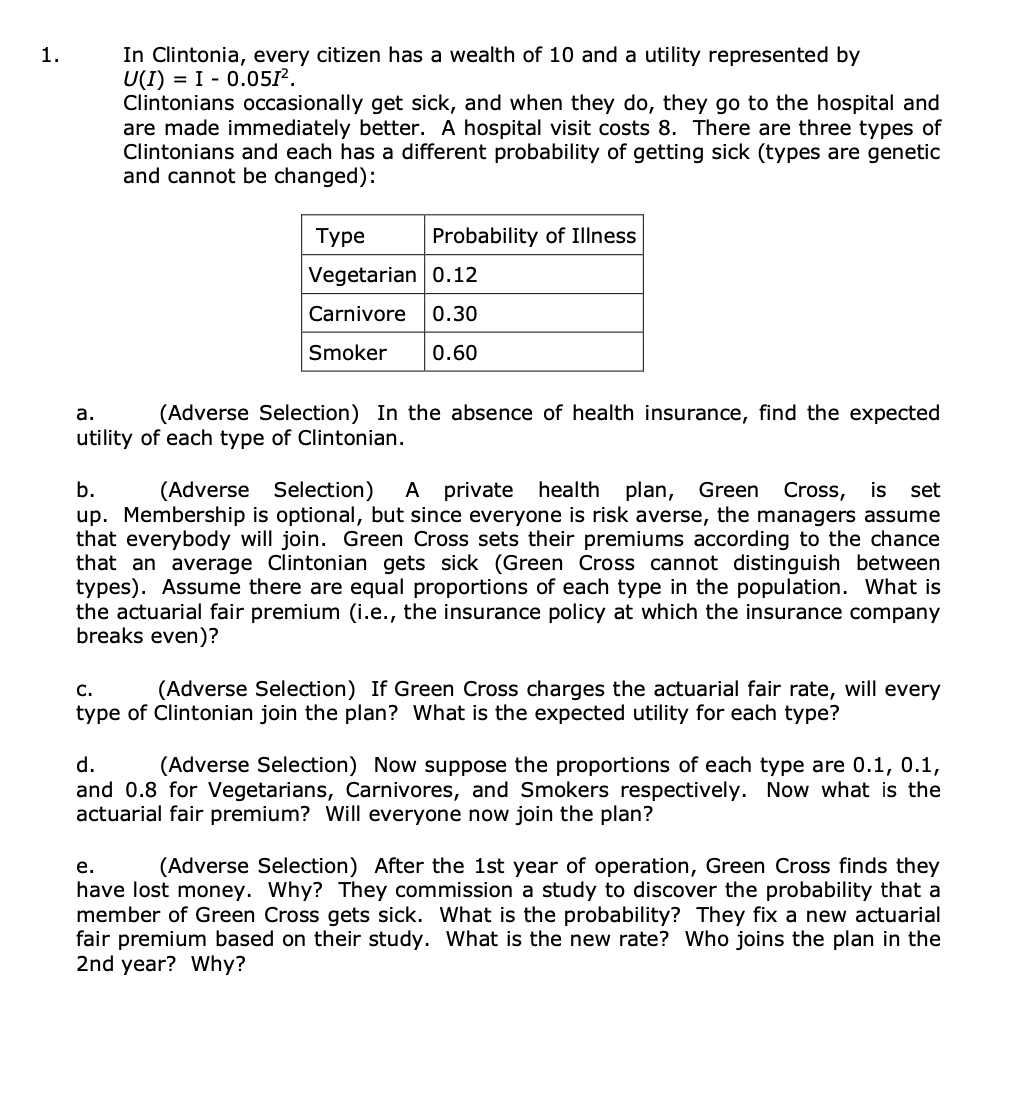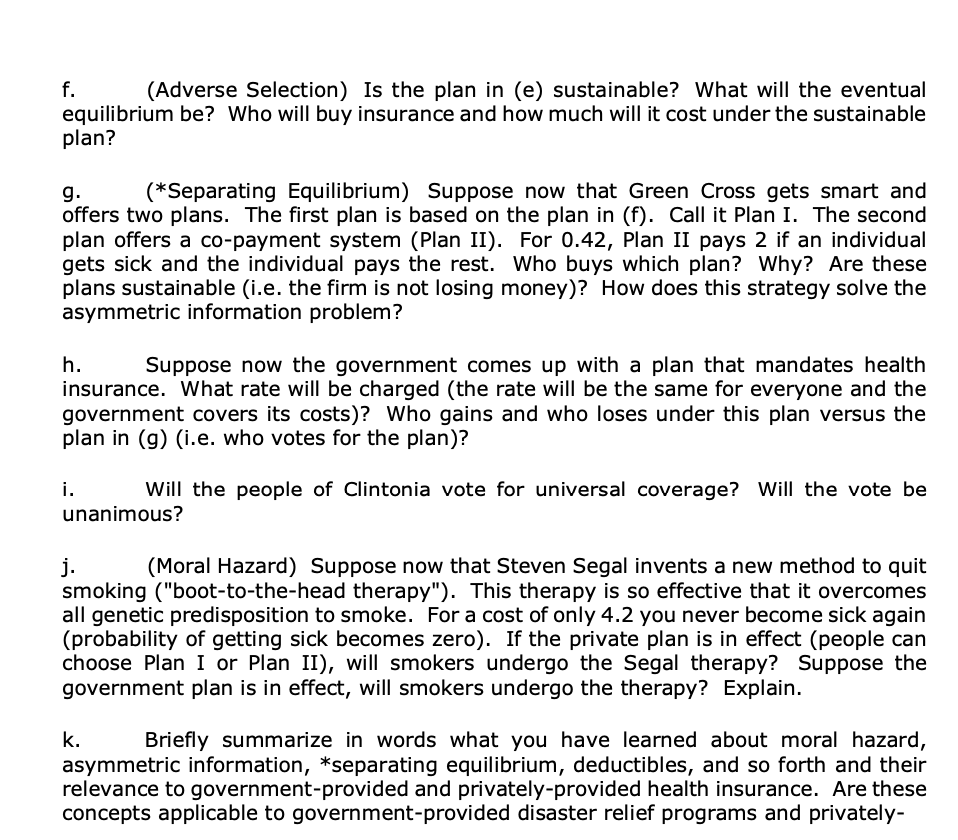please answer the questions.
In Clintonia, every citizen has a wealth of 10 and a utility represented by U(I) = I - 0.0512. Clintonians occasionally get sick, and when they do, they go to the hospital and are made immediately better. A hospital visit costs 8. There are three types of Clintonians and each has a different probability of getting sick (types are genetic and cannot be changed): Probability of Illness Vegetarian ' 0.12 Carnivore 0.30 a. (Adverse Selection) In the absence of health insurance nd the expected utility of each type of Clintonian. b. (Adverse Selection) A private health plan, Green Cross, is set up. Membership is optional, but since everyone is risk averse, the managers assume that everybody will join. Green Cross sets their premiums according to the chance that an average Clintonian gets sick (Green Cross cannot distinguish between types). Assume there are equal proportions of each type in the population. What is the actuarial fair premium (i.e., the insurance policy at which the insurance company breaks even)? c. (Adverse Selection) If Green Cross charges the actuarial fair rate, will every type of Clintonian join the plan? What is the expected utility for each type? d. (Adverse Selection) Now suppose the proportions of each type are 0.1, 0.1, and 0.8 for Vegetarians, Camivores, and Smokers respectively. Now what is the actuarial fair premium? Will everyone now join the plan? e. (Adverse Selection) After the 1st year of operation, Green Cross finds they have lost money. Why? They commission a study to discover the probability that a member of Green lCross gets sick. What is the probability? They fix a new actuarial fair premium based on their study. What is the new rate? Who joins the plan in the 2nd year? Why? f. (Adverse Selection) Is the plan in (e) sustainable? What will the eventual equilibrium be? Who will buy insurance and how much will it cost under the sustainable plan? g. (*Separating Equilibrium) Suppose now that Green Cross gets smart and offers two plans. The rst plan is based on the plan in (f). Call it Plan I. The second plan offers a co- payment system (Plan II). For 0.42, Plan II pays 2 if an individual gets sick and the individual pays the rest. Who buys which plan? Why? Are these plans sustainable (i.e. the firm is not losing money)? How does this strategy solve the asymmetric information problem? h. Suppose now the government comes up with a plan that mandates health insurance. What rate will be charged (the rate will be the same for everyone and the government covers its costs)? Who gains and who loses under this plan versus the plan in (g) (i.e. who votes for the plan)? i. Will the people of Clintonia vote for universal coverage? Will the vote be unanimous? j. (Moral Hazard) Suppose now that Steven Segal invents a new method to quit smoking ("boot-to-the-head therapy\"). This therapy is so effective that it overcomes all genetic predisposition to smoke. For a cost of only 4.2 you never become sick again (probability of getting sick becomes zero). If the private plan is in effect (people can choose Plan I or Plan II), will smokers undergo the Segal therapy? Suppose the government plan is in effect, will smokers undergo the therapy? Explain. k. Briey summarize in words what you have learned about moral hazard, asymmetric information, *separating equilibrium, deductibles, and so forth and their relevance to government-provided and privately-provided health insurance. Are these concepts applicable to govemment-provided disaster relief programs and privately








